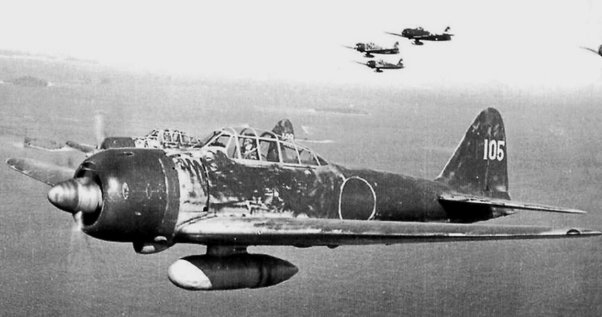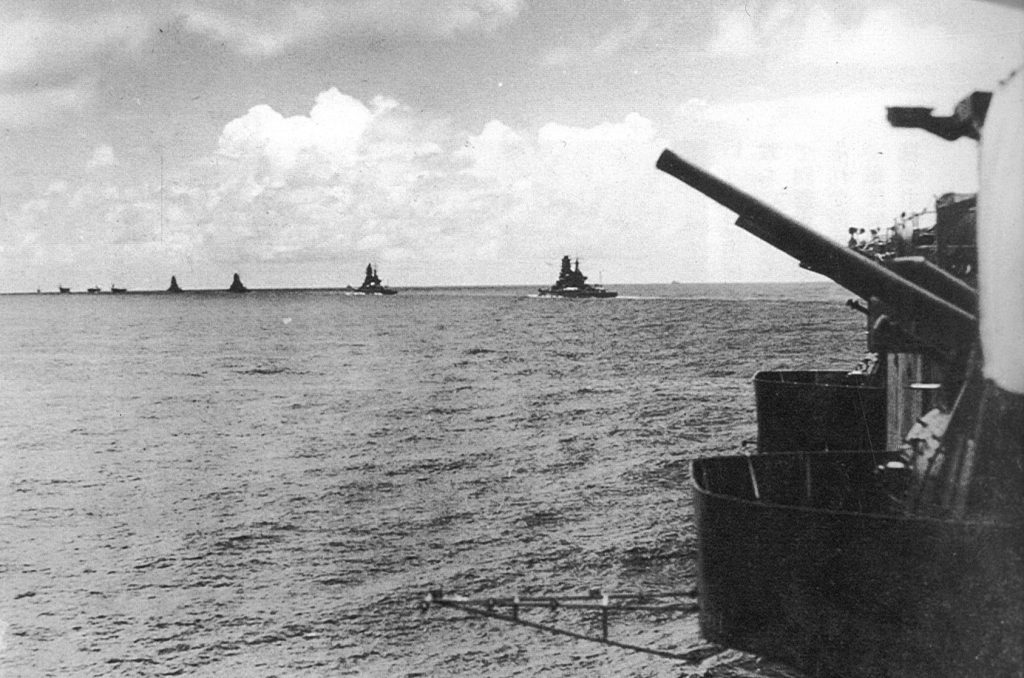After the successful Pearl Harbor attack on December 7, 1941, and subsequent conquests from the Philippines to Singapore to the Dutch East Indies, the Imperial Japanese Navy set its sights beyond the Pacific, advancing into the Indian Ocean and threatening the jewel in the crown of the British Empire, challenging the British naval fleet and pushing it out of the Indian Ocean. Below are the possible reasons why Japan failed to take Ceylon during the Second World War.
British naval bases at Colombo and Trincomalee were among the most strategically important in the Far East, and every observer at the start of 1942 expected that the Japanese military would attempt to seize them. Admiral Erich Raeder advised Hitler on February 13, 1942, “Once Japanese battleships, aircraft carriers, submarines, and the Japanese naval air force are based in Ceylon, the British will be forced to resort to heavily escorted convoys if they desire to maintain communication with India and the Near East.
The Suez and Basra positions are the western pillars of the British position in the Indian Ocean. Should these positions collapse under the weight of concerted Axis pressure, the consequences for the British Empire would be disastrous.” [Erich Johann Albert Raeder (24 April 1876 – 6 November 1960) was a naval leader in Germany who played a major role in the naval history of World War II. He was Commander in Chief of the German Navy during the Second World War until his resignation and retirement in May 1943.]
Likewise, Winston Churchill commented during a visit to Washington that the April 1942 Japanese raids on Colombo and Trincomalee were concurrent naval manoeuvres off Ceylon’s coast as the same Japanese fleet that had devastated Pearl Harbor sought to extinguish the Royal Navy in eastern waters. “The most dangerous moment of the war, and the one that caused me the greatest alarm, was when the Japanese fleet was heading for Ceylon and the naval base there.
The capture of Ceylon, the consequent control of the Indian Ocean, and the possibility at the same time of a German conquest of Egypt would have closed the ring, and the future would have been black.” [Winston Churchill (30 November 1874 – 24 January 1965) was a British statesman, who twice served as Prime Minister of the United Kingdom, from 1940 to 1945 during the Second World War, and again from 1951 to 1955. During most of World War II, Churchill shaped Allied strategy in the war and led the country from the brink of defeat to victory.]
Related Post: Japanese attack on Ceylon During Second World War

However, in the initial phase of their expansion during the Pacific War, the Japanese only planned to capture two major British bases: Singapore and Hong Kong, both of which were relatively close to Japan. They regarded Ceylon more as the British version of Hawaii—a distant target that was home to a fleet they had to cripple but not a location that had to be occupied immediately. The Japanese did not attack Ceylon for another seven weeks after the fall of Singapore, and then their results were rather mixed.
There are four main reasons Why did Japan fail to take Ceylon during the Second World War?
Firstly, the British had some forewarning of the Japanese attack. By the end of March, they had received a warning from American cryptographers who had broken the Japanese naval code that Japanese aircraft carriers were entering the Indian Ocean. The British signals intelligence unit, the Far Eastern Combined Bureau, learned that these carriers were planning to attack ‘D’ and ‘DG’, which they identified as Ceylon and Colombo, respectively.
The air raid on Colombo was to come on the first or second of April. So, on the 30th of March, Admiral Sir James Somerville, a former commander of force in the Mediterranean, ordered the British Eastern Fleet to be put to sea so that it would not be caught in port, as the US Pacific Fleet had been at Pearl Harbor. Somerville planned to lie in wait for the Japanese carriers and ambush them.
Secondly, on April 4, 1942, a Catalina patrol aircraft spotted the Japanese fleet under Admiral Chūichi Nagumo approaching Ceylon. Air Commodore Leonard Joseph Birchall managed to send a warning before Catalina was shot down. As a result, the harbour at Colombo was cleared of all warships and merchant vessels that were able to sail—25 altogether. Since Admiral Somerville had already taken the Eastern Fleet to sea, this left relatively scant pickings for the Japanese when they attacked Colombo at dawn the following day, Easter Sunday.
In that raid and the subsequent attack on Trincomalee, they were able to sink the heavy cruisers Dorsetshire and Cornwall, which they caught at sea, as well as the Australian destroyer Vampire and the light carrier Hermes, also caught at sea. But the net results of the raids on Colombo and Trincomalee fell far short of those achieved at Pearl Harbor.
Thirdly, Admiral Sir Geoffrey Layton, in command at Colombo, had made sure that two squadrons of Hurricane fighters en route for Java had remained at Colombo. These gave Ceylon at least some modern air defence. The British claimed a high number of Japanese aircraft were destroyed; the Chief of the Imperial General Staff, General Alan Brooke, wrote in his diary on the 6th of April: “At any rate, the air action over Ceylon was successful yesterday, and we downed 27 Japanese.”
The number was nothing like this, but the report was not groundless, as it probably included many Japanese aircraft that were damaged but still made it back to their carriers. Having evaded Somerville, or perhaps more accurately, failed to seek him out, the Japanese carrier fleet returned to Japan for a much-needed refit.
Fourthly, Why did Japan fail to take Ceylon during the Second World War? The reason why the Japanese did not try to occupy Ceylon was not a failure but a dispute between the Imperial Japanese Navy and Army. According to Captain Mitsuo Fuchida, then a Captain in the Japanese Naval Air Force, the Navy’s plan was laid before a joint conference of the Army and Navy Sections of Imperial General Headquarters in the middle of March 1942, about a month before the Japanese air raids over Colombo and Trincomalee.
He says that the Navy plan, which envisaged amphibious operations (Military operations where both army and navy are involved, one attacking by land and the other by sea, are called amphibious operations) against Ceylon, required the participation of the Army.
The Army, however, had voiced strong opposition on the ground that it had to guard against the Soviet Union and therefore could not extend itself any further in Southeast Asia. From the Navy’s point of view, this argument appeared somewhat spacious in view of the Army’s operations in Burma at the time. But specious or not, the Army’s refusal to co-operate meant that the proposed offensive in the Indian Ocean could not be carried out. (Midway: The Battle That Doomed Japan, the Japanese Navy’s Story, page 75) Both Fuchida and Okumiya, Commander in the Imperial Japanese Navy, took part in the air raids over Ceylon. If the Army had accepted the Navy plan, Ceylon’s fate would have probably been different.
Finally, The Indian Ocean raid, also known as Operation C or Battle of Ceylon was a tactical victory but a strategic defeat for the Japanese because it failed to achieve its objective of destroying the British Eastern Fleet. In this sense, Admiral Somerville was the real victor, because his priority had been to preserve that fleet and so retain control of the Indian Ocean. At the same time, Leonard Birchall was nicknamed ‘the Saviour of Ceylon’ for having spotted a Japanese fleet approaching Ceylon (now Sri Lanka) on 4 April 1942 while Patrolling over the Indian Ocean in a 413 (RCAF) Squadron Catalina flying boat.
Thanks for reading the post (Why did Japan fail to take Ceylon during the Second World War?) and we’ll see you on the next one!
Affiliate Disclosure: As an Amazon Associate, I earn from qualifying purchases. This blog post may contain other affiliate links as well by which I earn commissions at no extra cost to you.


I enjoy reading through a post that will make people think.
Also, thank you for allowing me to comment!
Hello! I’ve been following your blog for some time now and finally got the courage to go ahead
and give you a shout out from Porter Tx! Just wanted to say keep up the good
job!
” Appreciate your feedback. Happy to hear that. “
Have you ever considered writing an ebook or guest authoring on other blogs?
I have a blog based on the same subjects you discuss and would really like to have you share
some stories/information. I know my readers would appreciate your work.
If you are even remotely interested, feel free to shoot me an email.
You really make it seem so easy along with your presentation however I find this matter to
be actually something which I feel I might never understand.
It kind of feels too complicated and extremely extensive for
me. I’m having a look forward for your next submit, I’ll try to get the dangle of it!
I’ve been exploring for a bit for any high-quality articles or
weblog posts in this sort of space . Exploring in Yahoo I at last stumbled upon this website.
Reading this information So i am happy to show that I have a very just right uncanny feeling I discovered just what
I needed. I most without a doubt will make sure to do not
put out of your mind this site and provides it a look on a constant basis.